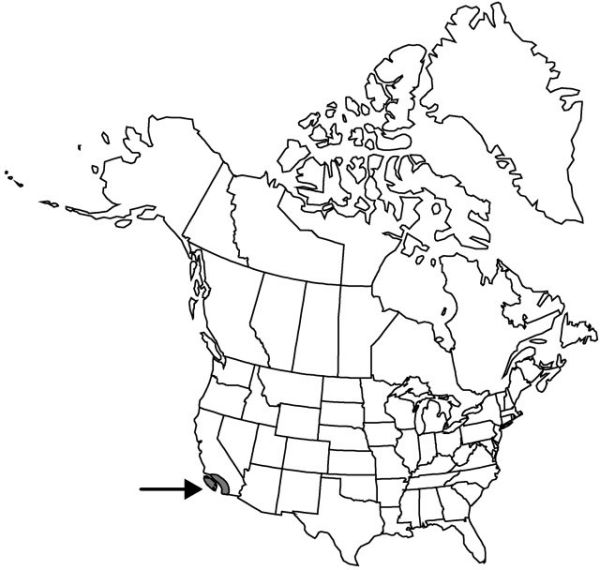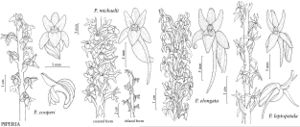Piperia cooperi
Bull. Torrey Bot. Club 28: 636. 1901.
Plants 14–90 cm. Stems attenuate toward tuberoid, fistulous, 1–8 mm diam. distal to leaves; bracts 3–12. Leaves erect-spreading; blade 9–20(–27) × 1.5–3.1 cm. Inflorescences sparsely flowered, (3–)10–40(–56) cm; rachis at least as long as peduncle; bracts 3–16 mm. Flowers green, fragrance nocturnal, honeylike; sepals 2.3–4 × 1.2–2.5 mm; dorsal sepal spreading to recurved, oblong to ovate; lateral sepals lanceolate to oblong; petals projecting to ± erect-spreading, asymmetrically triangular-ovate, 2.6–3.8 × 1.2–2 mm; lip deflexed, triangular-ovate, 1.6–4 × 1.6–3.5 mm; spur horizontal to deflexed, narrowly cylindric, 3–6(–9) mm; viscidia ovate to oblong, 0.35–0.6 × 0.2–0.4 mm; rostellum blunt. Capsules 4–12 mm. Seeds blackish brown.
Phenology: Flowering Mar–May.
Habitat: Chaparral and coastal scrub
Elevation: 0–1500 m
Distribution

Calif., Mexico (Baja California).
Discussion
Piperia cooperi and P. michaelii have very similar flowers, and their blackish brown seeds are unique in the genus. A few specimens from the Santa Monica Mountains, California, described as P. lancifolia Rydberg, have flowers with spurs of intermediate length (6–9 mm).
Selected References
None.
